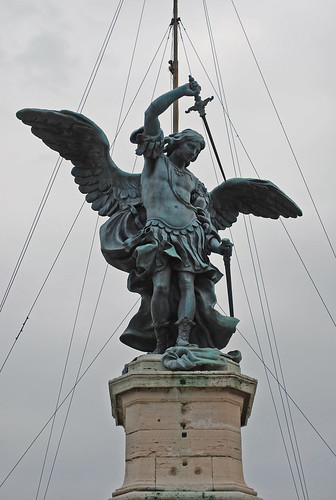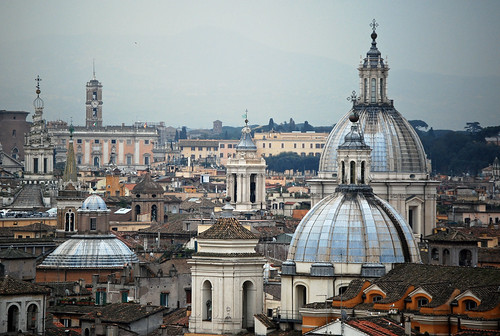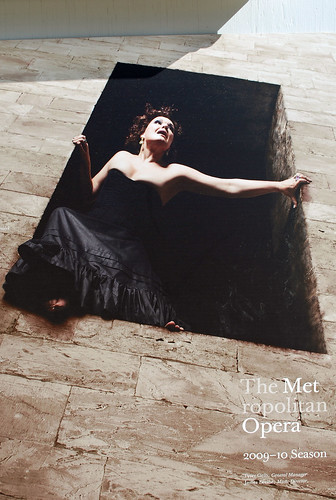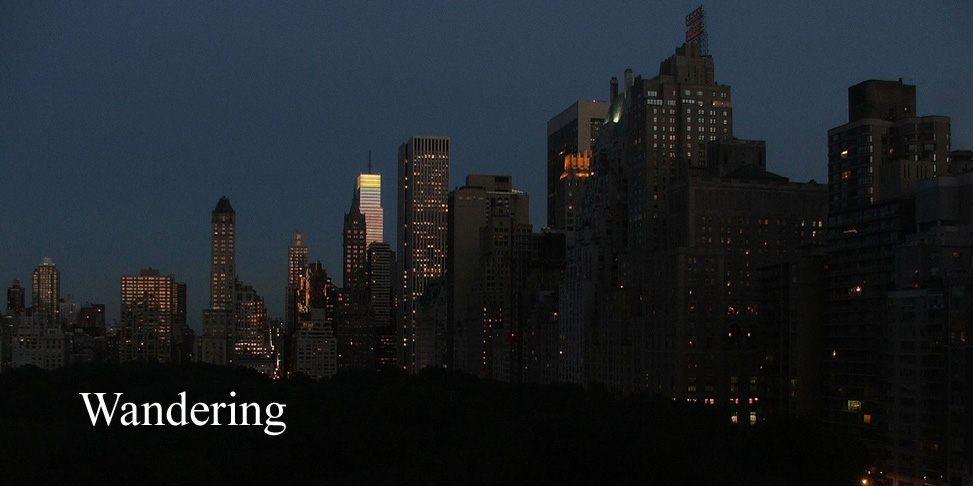
Opera Australia has opened its 2010 season with a new production of Puccini's Tosca. There was some fine singing from a wholly committed cast, but it's a production I hope never to see again. American soprano Tekesha Meske Kizart gave strong performance as Tosca; specially, as in her visse d'arte, when unimpeded by the director's concept.
I first saw Tosca in 1953, and thought I might qualify for some kind of record until, while listening to the opening night of the Met's 2009 Tosca online, I learned that Licia Albanese who sang the role at the Met in 1950 was in the audience. In any event, I have known Tosca for more than half the life of the work, and heard it many times.
It's true that Puccini wrote memorable tunes, but there is a lot more to his music. He often creates not only atmosphere and mood, but also a sense of place. For example, in Il Trittico: contrast the music opening Il Tabarro depicting the barges on the Seine complete with fog horns, and the entirely different music for the convent garden in Soeur Angelica. The music of Tosca is very much tied to the historical settings: the Te Deum in Sant'Andrea della Valle and the sound of the church bells at the opening of Act 3. I discovered from an article in the OA program that Puccini went to the top of the Castel St. Angelo to hear the bells and ensure he had their pitch right.

In April last year I stood at the ramparts of the Castel St. Angelo, looking out over Rome when church bells began to ring. It wasn't dawn, but it was extraordinarily moving to be reminded of the music of Tosca in the place where Act 3 is set.
The new production by Christopher Alden for Opera Australia places the story in a single room, and moves the story to present day Italy. The intention is to heighten the immediacy of the drama, but it is a bold step to excise so completely the locations movingly represented in the music. Nothing a particular production does can destroy a work, which remains intact to be performed again in another style; classic plays are cut and altered often to excellent effect, throwing new light on the familiar. Notwithstanding the advent of directors' opera, the continuity provided by the music makes it impossible to cut and amend the text in the way which has become commonplace for Shakespeare and other classic plays. Some works appear in different versions of course and some can be and are cut, but the music is a constraint. I think that in Tosca, the music is more than a constraint on adaption; its suggestions of place, character and atmosphere are the reason the opera continues to be performed over 100 years since it was composed. The play by Sardou, on which Tosca is based, is not in demand.
Christopher Alden's production, though new to Australia, was first performed by Opera North in 2002, and has been revived there since. English critics liked it; which makes an interesting comparison with the reception given by both critics and the opening night audience to the much less radical new production by Luc Bondy for the Met in New York.
Writing in The Independent in 2002, Anthony Arblaster, who admits he thinks Tosca is a "nasty melodrama", said:
Alden sets the opera in contemporary Italy, and treats it as a lesson in the habitual ruthlessness and casual brutality of modern state power. This involves taking a few liberties with the narrative (sic), but the gain is that the story is dragged out of the comfortable never-never land of Late Romanticism and placed in our time, when torture and murder are the stock- in-trade of many states. The results are suitably shocking.
And Richard Morrison, writing about the 2008 revival in The Times enjoyed a compelling night in the theatre.
while recognising that:
...the American takes brazen liberties with the time, place and plot of Puccini’s 1900 thriller. And sometimes he seems perversely determined to subvert the music’s power as well.
Writing in The Guardian, Mr. Alden himself says:
The posters for Berlusconi's Forza Italia party that line the walls of the dingy church basement in which this Tosca is set rob the audience of the comforting thought that Scarpia's repressive despotism has vanished from our world.
These days many opera directors are anxious to rob us of these kinds of comforting thoughts: but who thinks them? I have never met anybody under the delusion that repressive despotism has vanished; anyone suffering from it would need to live in comfortable isolation from all the media, even Berlusconi's media. At the risk of turning moraliser myself, it is not accurate or sensible to equate the Berlusconi government and Scarpia's despotism.
The single purpose set is a large room, apparently attached to a church though with some very large klieg lights hanging from the ceiling. Though not a usual ecclesiastical fitting, they are useful if the room is wanted for an interrogation. There is a confessional box in the back and glassed in alcove with a television set, probably tuned to a Berlusconi channel, in the front.
Though I was puzzled about how the Te Deum would be performed in such a utilitarian space, things were promising to start with. The sacristan's conversion into a surly janitor was a nice change from the familiar comic turn, and Tosca's display of jealousy and suspicion was particularly effective. Then a strange thing happened, the escaped prisoner, Angelloti, emerged from the confessional which served as the private chapel where he hides, and sat in a chair to the side of the stage. Strange because the score includes music to show his stress and anxiety as he leaves the chapel, but this music comes after Tosca has left.
Tosca does not see him as she leaves ( understandably in one sense, as in the opera as written he is not there ) which makes no dramatic sense. Later, in Act 2, Scarpia's henchmen Spoletta and Sciarrone are left in the back of the room oblivious to the seduction and murder taking place a few feet away. This kind of thing is a distraction from the drama, unless you are intrigued by working on something akin to a cryptic crossword puzzle while watching the performance. It must be a STATEMENT of some kind, but what ? It could just be the usual post modernist device of leaving actors sitting about the stage so that we don't forget we are in a theatre; but my best guess about this one is that it somehow stands for a proposition resembling evil is everywhere but we do not see it even when it's before our very eyes. Bravo.
Scarpia's entrance in Act I of Tosca is, I think, the most spine chilling moment in all of opera. Puccini breaks into the games of the choir boys and sacristan with an ominous statement of Scarpia's theme. Here, the possibilities of this moment are lost, as Scarpia has already wandered into the room by the time this music is reached.
I think that the portrayal of Scarpia in this production is wrong. It is true that Scarpia, as written, is a sterotypical villain out of melodrama; but this has not prevented great performances of the role which provide alarming insights into the nature of lust and despotic power. This Scarpia escapes one set of stereotypes and enters another: he is seen as a pathological figure whose lust is accompanied by a frenzied religious guilt.
This cannot be the Scarpia who sings:
I lust, and what I lust for I pursue,
I take my fill and throw it away
Then turn to a new attraction.
God created an abundance of beauties and wines
I want to savour all that I can of God's creation !
This passage and its music do not stand with the characterisation imposed on Scarpia, and as John Wegner performed it with great force and effect, he seemed to step out of himself and into the shoes of the real Scarpia.
The enactment of the Te Deum which ends Act 1, is associated with the distribution of lotto tickets from the sacristan's alcove. Why, I cannot imagine.
Act 2 and 3 are run together. The introduction to Act 3 is sung by the Marchesse Attavanti, rather than the shepherd boy as specified. The Marchesse had taken up a position on top of the confessional box where she reacts to the action with various gestures, assumes a foetal position and so on. The only consolation for this was the opportunity to hear Sian Pendry, who has a lovely voice, even when singing music which only emphasised the limits of what was going on.
Act 3 would have been wholly inexplicable, as almost all of the narrative is replaced by one which has no relation to the libretto or the music, had I not found Mr. Alden's Guardian article, in which he explains:
And when it comes to the last act, the production rejects the naturalistic verismo ethic as the best way to capture its bleak horror; instead, it is played out as a fantasy unfolding in the broken Tosca's demented mind. By the final curtain, the basement is littered with the corpses and the atmosphere hovers somewhere between Beckett and Tarantino.
Consistently with this approach, Tosca spends the whole of the Act cowering at the side of the confessional box. This is not a performance of Tosca at all. It is an invention riding on the coat tails of Puccini's magnificent score.
The AO production replaces one by John Copley which has had many revivals. It was a production which owed a great deal to Franco Zeffirelli's Tosca at the Met which was replaced by the new Luc Bondy production I have mentioned. Unlike the Zeffirelli and Copely productions, the new Met Tosca doesn't attempt to reproduce the historical locations of each act, but it does retain them. The church, palace and ramparts are replaced by nondescript sets and the costumes do not reproduce the dress of the historical period - or any particular period. The new Tosca was met by uproar on opening night and great objection from traditionalists - and Mr. Zeffirelli.

When I saw it in October, I was unable to understand the commotion. It was true that visually the historical locales were lost; but what was seen did not depart in any radical way from the story or the music. There was a gripping performance of the title role by the wonderful Katia Matilla. It is now available for everyone to see on the excellent Met Player - though the video production seems overly dark, and a lot of the movement in Act 3 is much harder to see than it was in the theatre.
It seemed to me that, although something was lost by making the locations anonymous, the production did gain a feeling of contemporary relevance of the kind Mr. Alden was attempting to achieve. I wondered if a few subtle changes to the libretto could place the work in, say, Franco's Spain to good effect.
But it was not only the first night crowd wrenched from their familiar pretty scenery that objected.
Alex Ross wrote in the New Yorker that Bondy:
...delivered an uneven, muddled, weirdly dull production that interferes fatally with the working of Puccini’s perfect contraption.
And in The New York Times, Anthony Tommasini:
Mr. Bondy probably wanted to rid his “Tosca” of stock clichés, yet his heavy-handed ideas are just as hackneyed.
When sensitive and experienced critics express views like these, it's worth pausing to consider the intricate relationship between words, music and dramatic narrative that give opera its place in our imagination. There cannot be innovation without mistakes, but the OA Tosca, for all its superficial excitement and excellent singing, goes too far in the wrong direction.





No comments:
Post a Comment